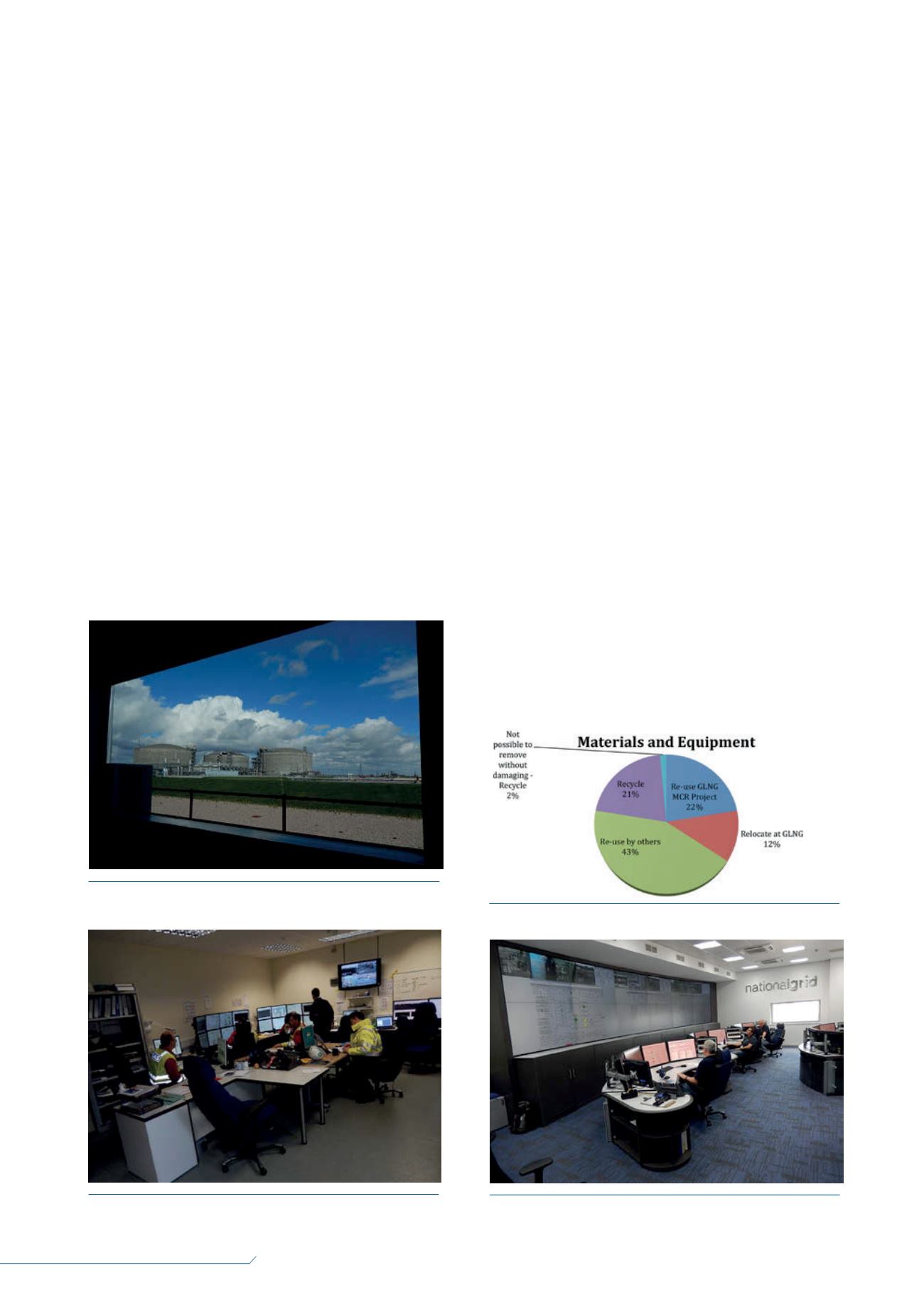
78
LNG
INDUSTRY
APRIL
2016
Abnormal Situation Management (ASM) Consortium and the
Engineering Equipment Materials Users Association (EEMUA 201),
as well as making sure it did not move too fast and cause
confusion. Therefore, it used its existing simulation system and
set up a console to stage the proposed changes, and invited the
shift teams to vote on their preferred HMI option. It was not a
surprise that a compromise was met between the full
ASMConsortium grey and the original graphics (Figure 2).
Operator scope of responsibility was key. It is critical that the
operators’ console only displayed the information and alarms
within their designated scope. This took a lot of education to
move away from the mindset of ‘I need to see all that is going on’
to the understanding of ‘somebody else is dealing with that. I
need to concentrate on my area.’ The systems department
developed overview screens and operator scope that showed the
process rather than the items of the plant, reducing the need for
the operator to build a mental model of the process. Figure 2
shows an example of how a single operator controls ship offload
from a single display, regardless of what area of the plant needs
filling. Historically, this could have needed three operators to
control each of their areas.
Bringing information together
To take full advantage of open systems, Grain LNGworked
to incorporate all standalone systems, such as CCTV, permit
to work, muster role call, work instructions, piping and
instrumentation diagram (P&ID) drawings and process status,
into a single video wall. This enabled the operator to see
information, such as running order of equipment, plant under
permit and isolations, on a single display. Once again, the user
experience was crucial. Grain LNG did not want to produce an
electronic piece of wallpaper that nobody looked at or interacted
with. It needed to be rich in content and simple to use, which was
a considerable challenge due to the infancy of the technology
being used (Figure 3).
Grain LNG opted to use a touch screen controller to
automatically manage the inputs and to switch the operator
keyboard and mouse from their console to the video wall. What
was pressed on the touch panel appeared in front of the station
that pressed it. Together with some pre-configured ‘incident’
layouts, this provides the operators with all of the information
that they require.
Let in the light
Work flows were studied and the building layout was designed
to minimise traffic flow and disruption to the operations
technicians. Visitors have a separate entrance and can only
gain access to the control area via the shift engineer’s office,
empowering the engineer to promote a calm, non-disruptive
environment for the technicians. Once again, small details were
key, and Grain LNG even installed a ceiling-mounted card reader
that allows a technician to open the door with their hands full,
maintaining a secure environment by reducing the temptation to
prop doors open.
The shift engineer’s office has a second function as an
incident control room, complete with smart board and plant
maps incorporated within a custom actuated desk, which allows
users to stand up. This is especially useful for emergency services
personnel whom usually have lots of equipment hanging from
their kit belts.
Natural daylight was high on the operations list of
requirements. Therefore, a large blast-proof windowwas
Figure 7.
Completed main control room.
Figure 6.
Reuse statistics.
Figure 4.
View from the new window.
Figure 5.
Temporary control room.


